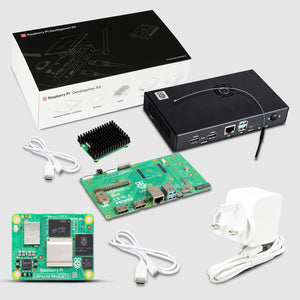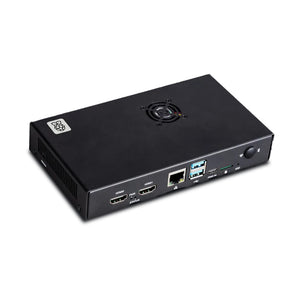Automation of the devices has become one of the best things in the market that gained popularity amongst the people. A lot of individuals are investing their money to build smart devices so that they can live their life more comfortably. PiRelay V2 - Relay Board for Raspberry Pi is the device that is the perfect blend of efficiency and power altogether. Let’s have a quick look at the PiRelay V2 and understand its significance!!!

PiRelay V2 - Relay Board for Raspberry Pi
PiRelay V2 is developed by SB Components with the potential to control 4 appliances and loads up to 250V AC/ 7 A, 30V DC/ 10A to provide a way to control the high voltage/current devices. It helps the user to enhance the intelligence of the appliances. It comprises an “Optocoupler” that allows the circuit to transmit an electrical signal between two isolated circuits through light energy. Optocoupler helps the user to prevent the high voltages in one part of the circuit from affecting the other part of the circuit which provides safety to the system. It provides a better connection of PiRelay V2 with the Raspberry Pi that gets enabled from the standardized shield form factor. One can enable the IoT technology of their home appliances using PiRelay V2 that will make their life efficient.

PiRelay V2 - Projects
Modern and smart interiors have become a wonderful concept that makes life simpler. In this fast world, It would be easy for a person to have control of their house with a single point of button. PiRelay V2 is designed to perform the task in an efficient way to fulfil the command of the owner. Consider this: you arrive at your office on time or you go out to your office after checking your laptop, pen, and wallet, but you realise halfway there that you forgot to turn out the lights in your house. It causes a difficulty for the employees and may impede their productivity at work. Most people hope they can control their problems if they have a remote control. You can develop a remote based on PiRelay V2 that would enable you to control your home appliances remotely, isn’t it great! You just need to connect your PiRelay V2 with the internet that would connect your phone or laptop directly to the home appliances. It would be better for you to have a safe and secure home also. 
Image Source - https://tech4gods.com/
Added Safety Components to PiRelay V2
One of the most important components of the PiRelay V2 is Optocoupler that makes the device safe. Our staff is committed to provide our customers with the most effective and efficient device possible in order to improve their productivity. An optocoupler is a device that transmits an electrical signal between two isolated circuits using light energy. It allows the user to isolate the circuits from one another, preventing the voltage from one section of the circuit from harming the other.
PiRelay V2 with Internet
It’s quite fascinating that the internet has become a powerful tool to make our lives better. You can easily connect your PiRelay V2 with the internet that would give you the control on your appliances. You can switch on/off the lights, television, air conditioner etc. without having a presence in the home. It is best for the people who always get anxious about their home and its safety but with the help of the relay they can relax. PiRelay V2 improves the user's quality of life by automating electrical products. A user does not have to be concerned about their electrical equipment. It also saves electricity because it allows users to turn off their house or office's electrical gadgets from their electronic devices.

PiRelay V2 Features
- High-quality Relay and loads up to 250VAC/7A, 30VDC/10A.
- Optocoupler
- Standardized shield shape and design.
- LED working status indicators for each Relay.
- High-quality Relays.
- Pin Stacking Header for accessing GPIO of Raspberry Pi Board
PiRelay V2 Specifications
- 4 High-quality Relay and loads up to 240VAC/7A, 125VDC/10A.
- Optocoupler
- Standardized shield shape and design.
- LED working status indicators for each Relay.
- High-quality Relays.
- 40-Pin Stacking Header for accessing GPIO of RPi.
- Connectivity of the Relay with Raspberry Pi without GPIO
- Pin 2-> 5V
- Pin 6->GND
- Pin 29-> Relay 4
- Pin 31->Relay 3
- Pin 33-> Relay 2
- Pin 35-> Relay 1
- Connectivity using the stack method:
- GPIO 5, GPIO 6, GPIO 13, and GPIO 19 are used for controlling Relay. But the user can remove the Relay Jumper and select a custom GPIO pin.
- Relay pins - COM, NO (Normally Open), and NC (Normally Closed) are available for each Relay
- Comes with development resources, including examples in python
- Control through PiRelay App
- Control up to 4 Appliances.
- Relay Status indicators.
- Compatible with Raspberry Pi 4, 3B+, 3, 2, Zero.
- 40 Pin Stacking Header.
- Control PiRelay V2 through PiRelay V2 Mobile App.
- Make your home IoT enabled
PiRelay V2 Installation Process
Installation of PiRelay V2 is very easy and we understand that most of you are so excited to build a home automation system. You just need to follow the below steps and voila! Make your home smarter
Python
- Open Terminal and clone/download the repository by typing below command in terminal:
git clone https://github.com/sbcshop/PiRelay-V2
- Your code will be downloaded to '/home/pi' directory. Use the 'ls' command to check the list of directories and the 'cd' command to enter the directory.
cd PiRelay-V2
- 'test.py' is an example code for PiRelay-V2. Run the test file and play with PiRelay-V2 by running below the python command.
python3 test.py
If GPIO 4 Relay is not working, you can try below fix
- Click on Start button >> Preferences >> Raspberry Pi Configuration, Then click on Interfaces Tab and make sure 1-Wire is disabled.

- Click on the OK button then reboot Raspberry Pi.








